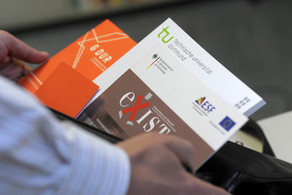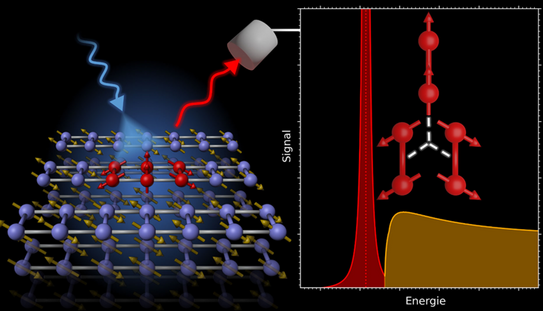International Team Predicts Extraordinary Three-Particle State
- Top News
- Research
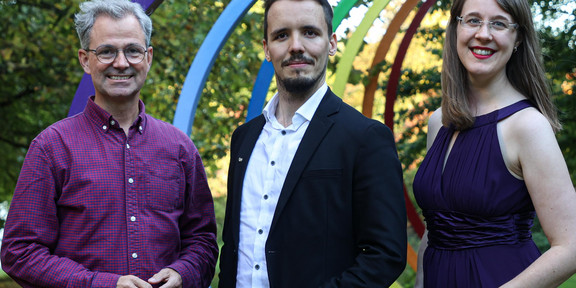
Together with colleagues from the Los Alamos National Laboratory, USA, and the German Aerospace Center, Cologne, a team from the Department of Physics at TU Dortmund University led by Professor Götz Uhrig has theoretically analyzed a solid-state system and discovered that three particles bind together in it in a novel way. This is a new phenomenon in the theory of condensed matter and their discovery was therefore recently published in the renowned scientific journal Communications Physics.
In nature, we encounter simple and highly complex bound states in every type of matter. An electron, for example, is bound to the atomic nucleus of a hydrogen atom. The force that causes this is the attraction between two different charges according to Coulomb’s law. But large protein or DNA and RNA molecules, which consist of many thousands of particles, are also held together by Coulomb force. This force always acts between no more than two partners that are attracted in the case of positive and negative charges and repelled in the case of equal charges. Such an interaction is called pair interaction or two-particle interaction.
Unknown three-particle interaction discovered
The researchers from Dortmund, Cologne and Los Alamos have now predicted an extraordinary three-particle interaction for the first time in a solid-state system which induces a threeparticle bound state. “The binding in this state does not result from the attraction between two of these particles respectively, but instead only happens when all three particles are present and interact together,” explains Professor Götz Uhrig.
The solid-state system for which the new phenomenon is predicted is an antiferromagnetic spin ladder system. In these spin ladders, the magnetic excitations, known as triplons, are those particles that interact magnetically with each other. Dr. Leanna Müller, who undertook her doctoral degree at the Department of Physics at TU Dortmund University, calculated the three-particle interaction. Gary Schmiedinghoff, a doctoral candidate at the department, pushed the calculations a decisive step forward and evaluated the data. “Only the close collaboration of my research group with colleagues in Los Alamos and Cologne enabled us to derive these results and classify their predictions for experiments,” emphasizes Professor Uhrig.
X-rays should deliver experimental proof
In the process, the team also made concrete predictions of how the unexpected state with three triplons can be detected experimentally in real materials in the future: To do this, high-energy photons – light particles – must be shot at a sample of the material in order to then measure in which directions and with which energies they continue to fly. The possibilities of this experimental method (resonant inelastic X-ray scattering) are currently expanding at a rapid rate, so that experimental proof of the triple bond of magnetic excitations can be expected in the next few years.
Contact person for inqueries:


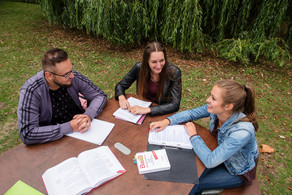

![[Translate to English:] Partner Four hands are holding the green logo of TU Dortmund University](/storages/tu_website/_processed_/1/d/csm_Partner_Nicole_Rechmann_KW_40b35bb3fd.jpg)

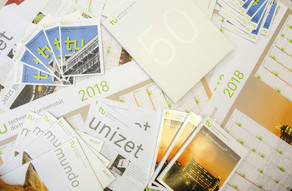


![[Translate to English:] Forschung An apparatus with tubes in a laboratory](/storages/tu_website/_processed_/0/c/csm_Forschung_Juergen_Huhn_cbd34afd6d.jpg)
![[Translate to English:] Studium Five students are sitting in a lecture hall. They are talking to each other.](/storages/tu_website/_processed_/c/9/csm_Studium_FelixSchmale_81d94adc86.jpg)
